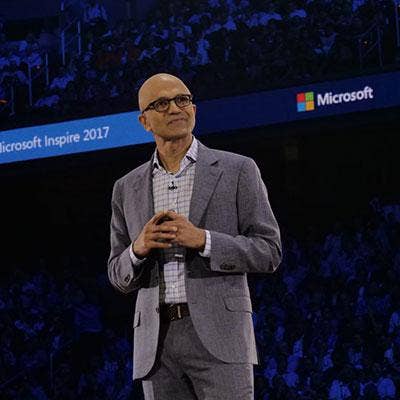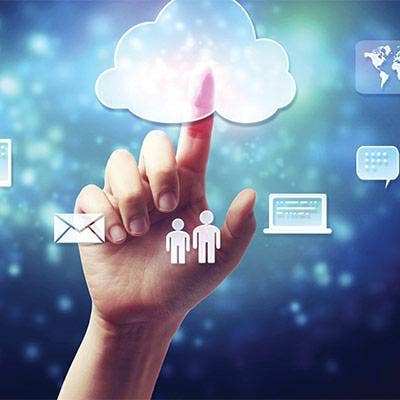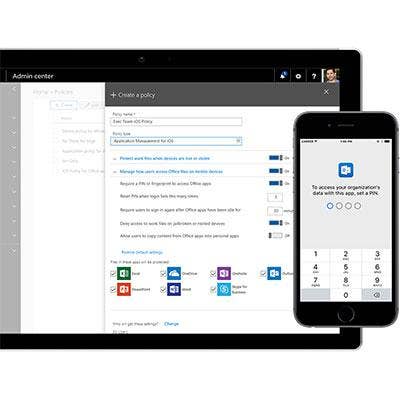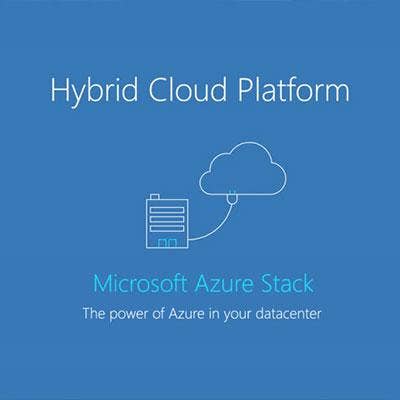5 Takeaways From Microsoft CEO Satya Nadella's Inspire Keynote Address

Shifting IT Priorities And Growing Channel Opportunities
Microsoft CEO Satya Nadella opened Inspire, Microsoft's annual partner conference, with a keynote speech Monday in which he outlined his vision of the next evolution in IT, how it impacts Microsoft's product direction and the opportunities it offers the software giant's channel partners.
Nadella addressed some 17,000 partners at the Inspire conference, which is being held this week in Washington D.C. at the Walter E. Washington Convention Center.
Here are five key takeaways from Nadella's nearly two-hour speech, which included several product demonstrations and videos from Microsoft customers and partners.

Microsoft Remains A Partner-Focused Company
Nadella opened by reiterating Microsoft's focus on the channel. "This ethos of being partner-led is always going to be in everything we do," Nadella said.
Nadella said the Microsoft partner ecosystem employs some 17 million globally. He also said there are now 64,000 partners selling Microsoft cloud solutions.
In a brief speech before Nadella, Ron Huddleston, Microsoft corporate vice president and head of the company's One Commercial Partner organization, touted Microsoft's efforts to create a single point of contact for partners through his operation. He also cited the company's plans to spend $250 million on more go-to-market efforts for partners and to hire new channel managers to work with partners in their sales efforts.
Last week CRN and others reported on a planned reorganization of Microsoft's sales operations that could result in layoffs of 3,000 or more employees. Microsoft partners said the reorganization could result in a greater emphasis on the channel by Microsoft and sharpen the company's focus on industry solutions.

IT Is Moving To An "Intelligent Cloud/Intelligent Edge" Model
Since taking over as Microsoft CEO in February 2014, Nadella has often described the IT industry as being in a "mobile first, cloud first" stage, following earlier mainframe, PC, client/server and cloud phases of development.
Nadella said Microsoft now sees "a real rapid shift to a new paradigm" that he called "the intelligent cloud and the intelligent edge."
Three characteristics will define intelligent cloud/intelligent edge. The first is that computing tasks and experiences will involve multiple devices, including desktop and mobile, and multiple means of "touch" and input/output. A task begun on a PC at work, for example, might be completed on a smartphone using very different means of input, data sources, and so on.
The second characteristic is that every device and application will have built-in artificial intelligence capabilities to enhance the application experience. And the third is the growing use of containers, microservices and server-less technologies that provide new ways to develop, distribute and manage increasingly complex sets of applications.

A $4.5-Trillion Opportunity For The Channel
While Nadella said the cloud first/mobile first paradigm generated $2.5 trillion in IT spending, that number will surge to $4.5 trillion with the Intelligent Cloud/Intelligent Edge paradigm.
That's because Intelligent Cloud/Intelligent Edge will expand what is generally considered to be "IT systems" today. "With increasing digitization, where every part of our society and economy is being fundamentally transformed because of digital technology, the opportunity is greater than ever before," Nadella said.
The CEO said this provides a tremendous opportunity for solution provider partners within the Microsoft partner ecosystem.

The Four Areas Of Focus For Microsoft Product Development
With the advent of Intelligent Cloud/Intelligent Edge computing, Microsoft is re-thinking is product development directions, now focusing them in four areas: the modern workplace, business applications, applications and infrastructure, and data and artificial intelligence.
Monday Microsoft debuted a number of new software packages that integrate a number of the vendor's products to better address the Intelligent Cloud/Intelligent Edge model.
For the modern workplace category the company debuted Microsoft 365, an integrated package of the vendor's Office 365 cloud productivity applications, Windows 10 and enterprise device management and security capabilities. For business applications it unveiled integrations between Microsoft 365, the Dynamics 365 cloud ERP application set Microsoft launched last year, and the LinkedIn business social network Microsoft acquired in December.

Moving Azure To Hybrid Cloud Environments
Microsoft had huge success with Azure, the company's cloud computing platform. Now Microsoft is taking steps to move Azure into hybrid cloud environments with the announcement of the general availability of Azure Stack, an extension of Azure.
Microsoft's hardware partners, including Hewlett Packard Enterprise, Dell EMC and Lenovo, will ship Azure Stack with their hardware systems. Microsoft is pricing Azure Stack using pay-as-you-go use and capacity-based models.
Microsoft is also making available an Azure Stack Development Kit for building and deploying applications for Azure hybrid cloud environments. Microsoft is offering a free single-server deployment option of the SDK for trial purposes.